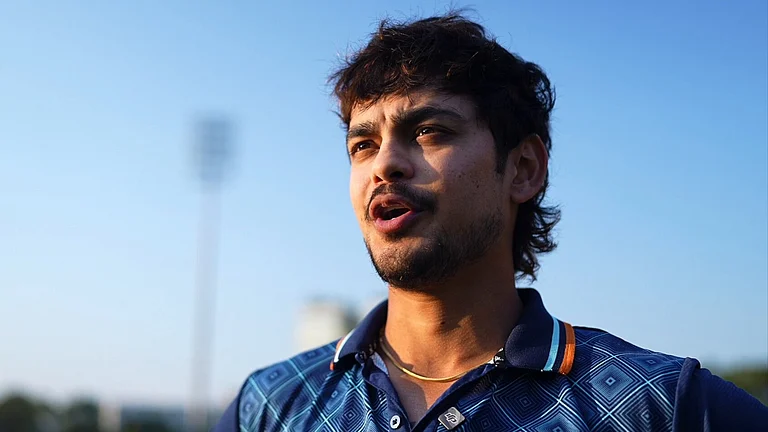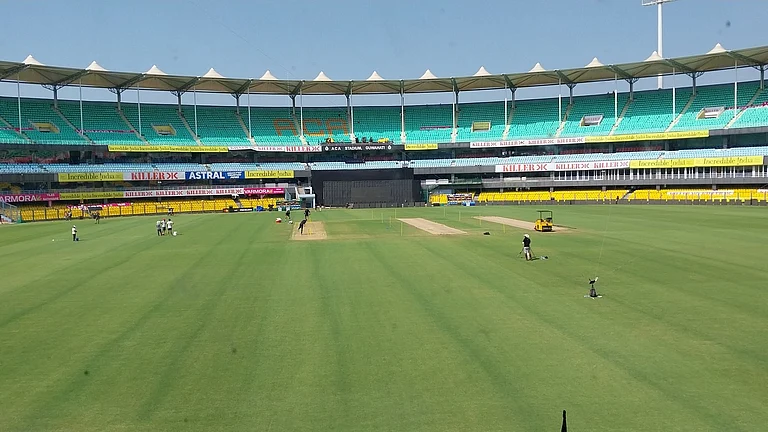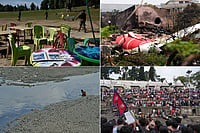What is Kashi?
It is said that the city of Kashi is as old as time, as old as legend, and old as God. It is the city of hidden abundance, of ghats and Ganga, busy bazaars, paans, Banarasi silk and dusty side-streets. It’s the Kashi of knowledge and music, traditions and culture. It’s an ancient capital of myriad myths and mystics. Once upon a time a dwelling of forest with no river, no human habitat to becoming the abode of Gods and demigods and the Brahama Sadan of the living beings.
Not on the ground, rather above the ground on the trishul (trident) of Lord Shiva, the beloved city of Lord Shiva, the heavenly abode of Lord Shiva and Ma Parvarti – this is Kashi.
The city of supremacy, the centre, bestower of the highest merit. The treasury of knowledge, the homes to Tulsi and Kabir. The city that was once the centre of social reformers of the time, revolters of taboos and ritual dogmas, of Rishis-Maharishis – Agastya, Pāṇini, Dhananvantari, Vedavyasa, Patanjali, and Shankaracharya. The city of enlightened learning and understanding where thoughts found balance, conversations got shaped, arguments logically structured. It's the temple of knowledge where work was worship. This is Kashi.
Varanasi, the modern name of Kashi, is a city along the ghats. Benaras of the medieval time is the city of temples. And Kashi, the ancient city of Benaras and Varanasi, is the centre of pilgrimage. It's the land of Buddha, the cultural capital of Hindus, the place of holiness, of Ganga that threads between this world and the next. Maa Ganga, as she is fondly revered, is enriched with the same mythical powers as that of the city. The holiness is weaved intrinsically in the daily life of the city is never out of reach. Varanasi is the safe haven providing the golden benediction where mortals may consort with the Gods.

Kashi, Benaras, Varanasi, an accumulation of all amalgamations – the City of Death, City of Life, the place where the past, present and future of life and time are already established. It's the abode where life meets death and death meets life.
It's the city where faith transcends everything and everyone. The sanctum sanctorum. It's the once well administered and prosperous kingdom of Ripunjay – who was renamed to King Divodasa, the epitome of the Dharmaraja. This is Kashi.
Was it Kashi?
I have been to Benaras a few times. Every time I go, there is this giddy excitement to understand and try to soak in the mysticism of the ancient city and its ghats. Irrespective of the work and the time constraint, a visit to the ghats is a must, for it is the long string of ghats – from Assi Ghat on one end of the city to Manikarnika on the other – that defines Kashi and redefines faith. The life and death of every Hindu revolves around these huge bathing steps on the banks of river Ganga in the cosmic realm of the ancient city.
Whether we have religious faith or not, the yearning to find, look, and understand the holiness of the faith, the city gets reshaped and broadened through a walk from Assi Ghat to Dashashwamedh Ghat or Manikarnika, for there is so much to take in. Painted lolly-red, the numerous temples on the ghats point skywards like a rocket whose launch, delayed by centuries, is still believed possible, even imminent. The army of believers, some laughing, some boisterous, but all serene splashing their way out into the (murky) holy waters, cupping their hands and reciting their hymns, oblivious of anybody’s presence. Some dunk their vessels and pour water into their mouths.
A few release diyas as offerings to Ganga. Close by, priests lounge in the warm shade of mushroom parasols crowded with bhakts, sages, tourists, and locals. Are they teaching disciples or just chatting with pals about politics? Are they enlightened or just completely out of it? Is there a difference? In the hidden corners of ghats, a sadhu has gone a long way towards the ideal of non-attachment, sitting still with eyes closed meditating or praying or maybe both. Witnessing this cacophony of images, you can see yourself getting transcended to a space that is brimming with fervour.
And you wonder is this the burning light of faith?
In a metaphor, the city has been conceived as the ‘wish-granting divine cow’ (Kamadhenu) in this era of falsehood and darkness (Kali Yuga) –
‘Serve with love all your life through Kashi,
the Wishing Cow of this Kali Yuga.
It banishes woe, affliction, sin disease
and amasses all things auspicious.’
But the meaning of Kashi has changed today. In the time of New India, there is a construction and establishment of New Kashi where the layers of mysticism, the serenity of faith has been messed. The evidence was hard hitting in my recent visit during the elections.
The city is being transformed to become the Kyoto of India and being expropriated in the name of “politics of change”. The solemn air is getting butchered. It has become toxicated and is wearing the city towards materialism where money is being made in the name of faith. Vapors of dust and dirt from the ongoing Kashi Vishwanath Corridor disturb the sanctity of the city, the cranes and boulders have sunk the ghats of Lalita and Manikarnika, obnoxious iron walls have been erected here and there on the ghats explaining their “significance”. A new one titled ‘Namo Ghat’ is being added, more tea stalls selling Maggi and Parle-G have come up and the glaring colours that are shone over Rashtrapati Bhavan are also being used for the ghats. It’s all hazy, pewy and bothering.

The Kashi Corridor which was inaugurated with much pomp by Prime Minister Narendra Modi is being advertised to take the tirtharthi straight to heaven, thus granting moksha. The architecture of the corridor is a mockery to the sentiments of the city, its dwellers, to the Gods, the saints and the sincere believers. The imposing structure of stone, its colour is disagreeable to the splendor of Kashi. The path that opens from the temple to Ma Ganga is robotically straight, devoid of flavor or the nostalgia of the past dwellings that were brutally razed. The ancient houses and their temples, the inhabitants and their bhakti which once brought liveliness to the area and was the charm of the ancient city has been bulldozed and shunned away.
Politics has become the colour of the ancient city, taking over the abode of Lord Shiva and painting it in hues of political religiosity. It is no longer the city of pilgrimage. It is rather being promoted as a tourist destination. A flamboyant cruise ship runs up and down the holy river, releasing pollution in the water and air, filled with giddy tourists of New India for whom the mysticism, the aroma of Kashi has become commercialised.
The quintessence has gone missing. Pundits and Mahants, the academia and intelligentsia, and many old bhakts of the city claim that Kashi is no longer the primordial energy of the undisturbed region, of truth and knowledge, bliss of faith. Rather the city has become a tourist town. As the nearby town of Sarnath, Kashi-Benaras-Varanasi has to become a tourist hub.
Devotees have become spectators and the audience is getting overwhelmed by Narendra Modi. He made Kashi his city and believed that by changing the synthesis of the city, he will leave a legacy that would bring pride and glory (back) to Hindus and Hindutva.
But Kashi has been made to change in the last seven years. Once the city of divinity and illumination, today it has become a tragic parable of absurdity. It has been straitjacketed into the ruthlessness of commercialisation. And the holy tirtha, the city of divine realm, is now changing to Devil’s helm. The abode of Shiva, ‘the forest of bliss’ has been ripped off its delight, the supremacy and the underlying fervour of faith.
Today Kashi has been reduced to become a city of the imagination, leaving behind a fascination for what it was, then the city that it is becoming.
But all of the wealth heaped on the senses is intensified and expressive of the faith that has converged here for centuries. For the power of faith and belief is not an issue, it's a fact. Even if you don't understand what you are seeing, you cannot help take it in with each individual articulating it in their own way.























